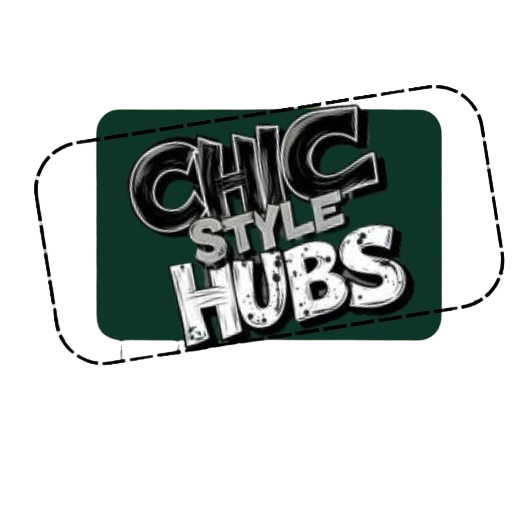Washi tape is a type of decorative masking tape that originated in Japan. Its rise in popularity among artists, crafters, and DIY enthusiasts is due to its versatility, ease of use, and aesthetic appeal. Made from natural fibers like bamboo, hemp, or the bark of trees such as the mulberry or the gampi tree, washi tape is strong, durable, and often beautifully designed. Whether you are decorating a journal, wrapping gifts, or adding a personal touch to home decor, washi tape can elevate your projects with minimal effort.
In this article, we will explore the history of washi tape, its various uses, its appeal to both casual crafters and professionals, and how it stands apart from other types of tape. By the end, you’ll understand why it has become a staple in the world of creative design and DIY projects.
The Origins of Washi Tape
The term “washi” comes from the Japanese words “wa,” meaning “Japanese,” and “shi,” meaning “paper.” Historically, washi paper has been used in Japanese art and culture for centuries, valued for its strength, texture, and the intricate designs that can be printed on it. Washi paper was traditionally handmade using fibers from plants, which made it both durable and eco-friendly.
Washi tape, however, is a more recent innovation. The concept of washi tape was developed by the Kamoi Kakoshi company, a Japanese manufacturer that initially produced industrial masking tape. In 2006, a group of Japanese artists approached Kamoi Kakoshi with the idea of creating decorative masking tape from washi paper. The company embraced the idea, and thus, the first rolls of decorative it were born. From there, it has exploded in popularity worldwide, with countless designs, colors, and patterns now available.
The Characteristics of Washi Tape
Washi tape differs from traditional masking tape in several key ways:
- Aesthetic Design: Washi tape is renowned for its beautiful patterns, colors, and designs. Unlike plain masking tape, washi tape can feature intricate designs ranging from floral patterns to geometric shapes, and it can even be customized with different themes like holidays or seasons.
- Tearable by Hand: One of the biggest advantages of it is that it can be torn easily by hand without the need for scissors or any cutting tool. This makes it incredibly convenient for crafting, especially when you’re working on a project that requires precision.
- Repositionable and Gentle on Surfaces: Washi tape sticks well to a variety of surfaces but can be removed or repositioned without leaving residue or damaging the surface. This makes it ideal for temporary decoration or projects where you need flexibility in positioning.
- Durability and Strength: Despite being thin and lightweight, it is durable due to its natural fibers. It can withstand wear and tear, making it suitable for both decorative and functional purposes.
- Eco-Friendly: Washi tape is made from renewable resources, often using traditional papermaking techniques, which makes it more environmentally friendly compared to many other types of tape.
Uses of Washi Tape in Crafts and DIY Projects
The versatility of washi tape has made it a favorite among crafters, DIY enthusiasts, and even professional designers. There are countless ways to use it, making it an essential tool in various creative projects.
Scrapbooking and Journaling
One of the most popular uses of it is in scrapbooking and journaling. it adds color and texture to journal pages, helping to create visual interest without overwhelming the content. It can be used to frame pictures, create borders, or highlight important dates and notes. Washi tape’s variety of patterns and styles means that it can match any aesthetic, from minimalist designs to bold and bright layouts.
Gift Wrapping
It has become a go-to material for creative gift wrapping. Whether you’re wrapping a small gift or decorating a larger package, it can replace traditional ribbons and bows, adding a unique and personal touch. Its decorative appeal allows you to create stunning designs, and its ability to stick securely to paper ensures that the wrapping stays intact. You can even use it to seal envelopes or attach gift tags.
Home Decor
For those who enjoy adding personal touches to their living spaces, it can be a cost-effective way to spruce up your home decor. You can use it to create temporary wall art, frame mirrors or pictures, or add detail to light switches and door frames. Since it is easy to remove, it’s perfect for renters who want to personalize their space without leaving permanent marks.
DIY Cards and Invitations
It is perfect for making handmade cards and invitations. It can be used to create borders, backgrounds, or decorative elements on cards for any occasion, from birthdays to weddings. Its easy-to-use nature makes it ideal for crafters of all skill levels, allowing anyone to produce professional-looking designs with minimal effort.
Organizing and Labeling
It is often used as a colorful and stylish way to organize and label items. It sticks well to plastic, glass, and paper surfaces, making it useful for labeling storage containers, jars, or binders. Its various colors and patterns can be used to create color-coded systems, adding both functionality and visual appeal to your workspace or home organization.
Phone and Laptop Decoration
Washi tape is also frequently used to personalize electronic devices like phones, laptops, and chargers. By applying it to the edges of a phone case or the back of a laptop, you can make your devices stand out while still keeping the design temporary. If your style changes, you can easily remove or replace the tape without damaging the device.
The Popularity of Washi Tape in the Crafting World
Washi tape’s rise in popularity can be attributed to its accessibility and the creative possibilities it offers. For those who may not have extensive crafting skills or experience, it provides a simple way to add flair to a project without needing specialized tools or materials. The fact that it can be easily torn, repositioned, and removed without causing damage makes it user-friendly and ideal for beginners.
Moreover, washi tape has become a social media sensation, with many crafting communities sharing ideas, tutorials, and inspirations on platforms like Instagram and Pinterest. The visual appeal of washi tape makes it perfect for sharing online, and many DIY influencers and content creators feature washi tape projects in their content, further boosting its popularity.
Why Washi Tape Stands Out from Other Decorative Tapes
While there are many types of decorative and crafting tapes on the market, washi tape stands out due to its unique combination of beauty and functionality. Unlike plastic-based decorative tapes, washi tape’s paper-like texture gives it a softer, more organic feel. Its eco-friendly nature is another distinguishing feature, especially in a world that is increasingly focused on sustainability.
Washi tape’s variety of designs and patterns also sets it apart from other tapes. No matter your taste or project, you are likely to find a washi tape design that suits your needs. This wide range of options allows for endless creativity and customization in every project.
Conclusion
Washi tape is a simple yet powerful tool that has revolutionized the crafting and DIY world. From its humble origins in Japan to becoming a global phenomenon, it has earned its place in the hearts of creative individuals everywhere. Its blend of beauty, functionality, and eco-friendliness makes it an ideal material for a wide variety of projects, from scrapbooking and gift wrapping to home decor and personal organization.
With so many uses and a vast array of designs to choose from,it offers endless possibilities for adding personal touches to your creative projects. Whether you’re a seasoned crafter or just beginning to explore the world of DIY, washi tape is a must-have material that will inspire creativity and bring your ideas to life.












